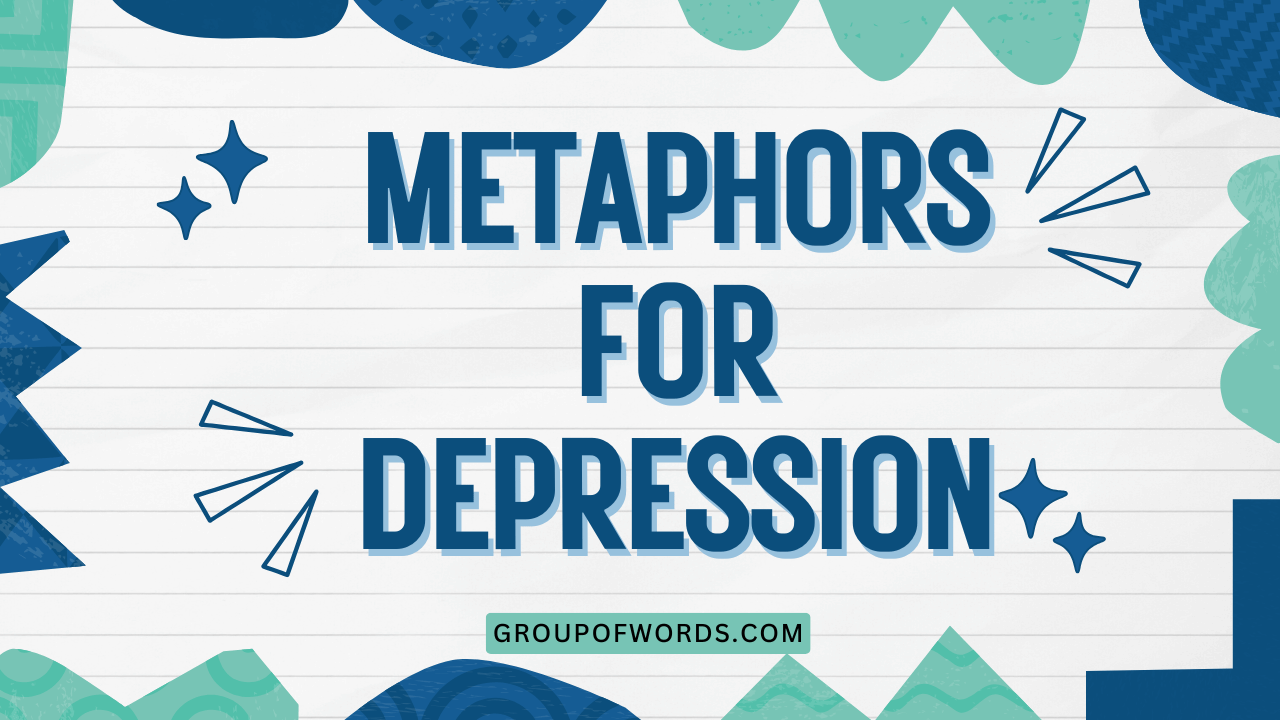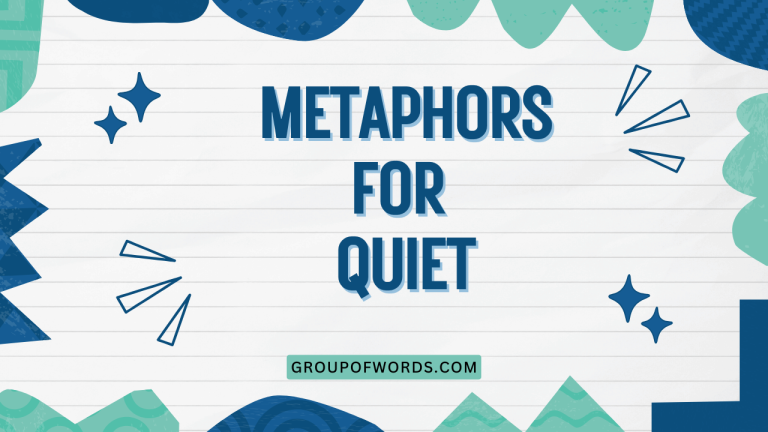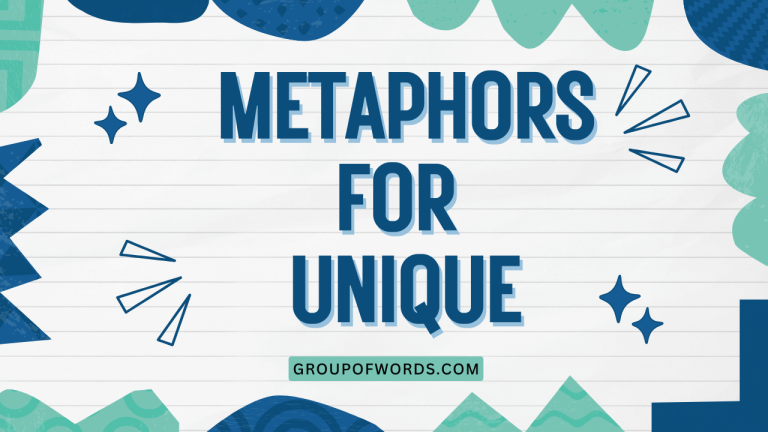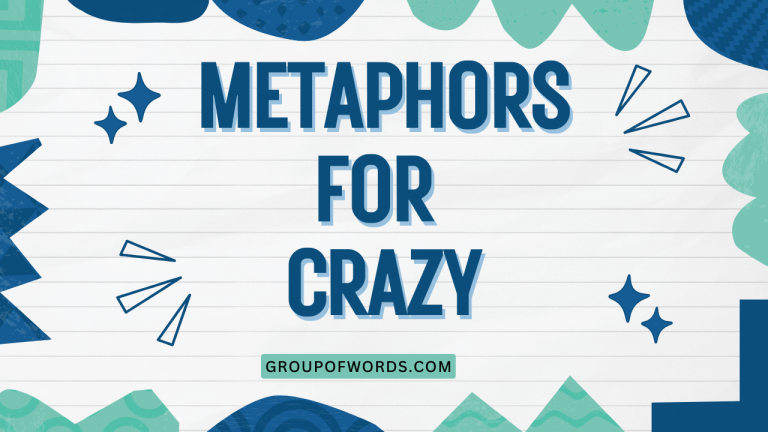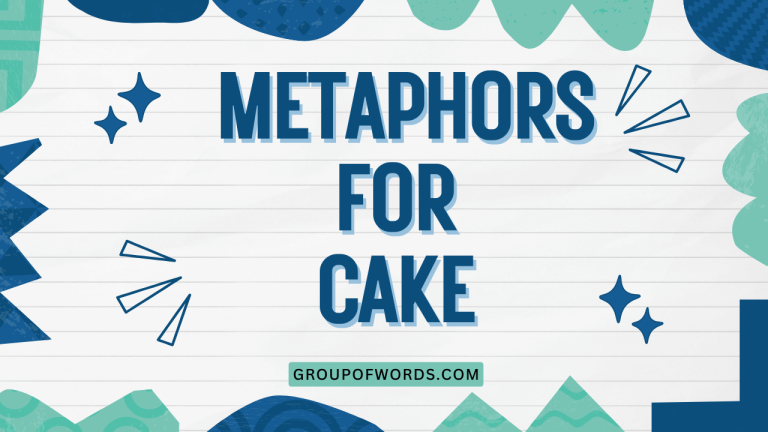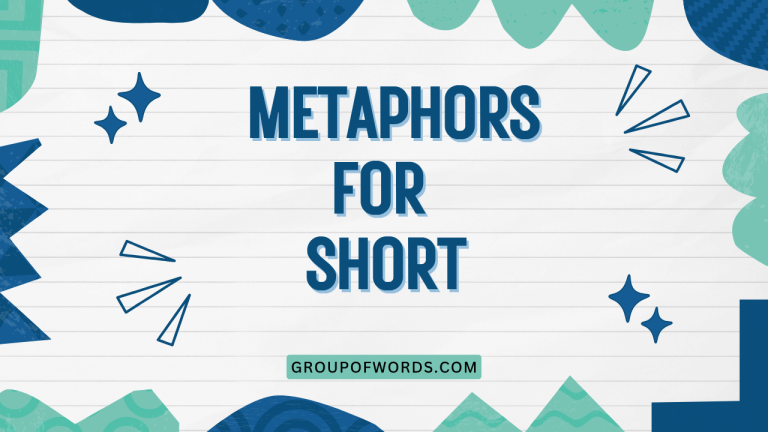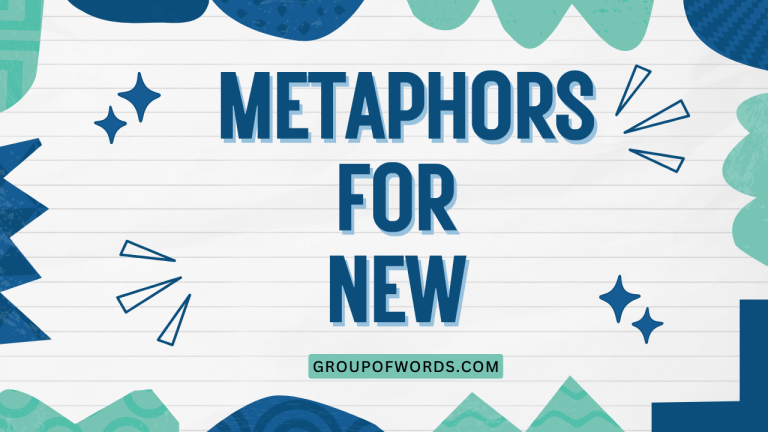Metaphors for Depression: Understanding the Language of Low Mood
Understanding depression is often challenging, especially when trying to express its complexities. Metaphors provide a powerful tool for communicating the often-indescribable experience of depression.
By using metaphorical language, we can bridge the gap between personal experience and shared understanding, making it easier to discuss, recognize, and empathize with this condition. This article explores various metaphors used to describe depression, examining their grammatical structure, common usage, and impact on communication.
It is useful for anyone who wants to understand how figurative language helps us conceptualize and discuss depression, including students, mental health professionals, and individuals experiencing or supporting someone with depression.
This article is for anyone interested in learning more about the grammar and usage of metaphors for depression. It will be beneficial for students, teachers, and anyone who wants to better understand how depression is described and understood through language.
Table of Contents
- Introduction
- Definition of Metaphor and its Role in Describing Depression
- Structural Breakdown of Depression Metaphors
- Types and Categories of Metaphors for Depression
- Examples of Metaphors for Depression
- Usage Rules for Metaphors in Describing Depression
- Common Mistakes When Using Metaphors for Depression
- Practice Exercises
- Advanced Topics in Metaphorical Language
- Frequently Asked Questions
- Conclusion
Definition of Metaphor and its Role in Describing Depression
A metaphor is a figure of speech that directly compares two unrelated things, asserting that one thing *is* another, or implying that they share similar qualities. Unlike similes, which use “like” or “as” to make a comparison, metaphors make a direct comparison without these words. The power of a metaphor lies in its ability to transfer qualities from one concept to another, creating a new understanding of the subject at hand.
In the context of depression, metaphors serve as a crucial tool for expressing the subjective and often elusive experience of this mental health condition. Depression, characterized by persistent sadness, loss of interest, and a range of other emotional and physical symptoms, can be difficult to articulate directly.
Metaphors allow individuals to convey the intensity, nature, and impact of depression in a relatable and understandable way, helping others grasp the emotional weight and complexities of the condition. For example, saying “Depression is a heavy cloak” communicates the burdensome and restrictive nature of the condition more vividly than simply stating “I feel sad.”
Metaphors also help to destigmatize depression by framing it in terms that are easier to comprehend and empathize with. By using familiar concepts such as darkness, weight, or emptiness, metaphors can make the abstract experience of depression more concrete, fostering greater understanding and compassion from those who may not have experienced it directly.
Furthermore, metaphors provide a shared language for discussing depression, facilitating communication between individuals, therapists, and the wider community.
Structural Breakdown of Depression Metaphors
Understanding the structure of metaphors is crucial for both interpreting and using them effectively. A typical metaphor consists of two main elements: the tenor and the vehicle. The tenor is the subject being described (in this case, depression), while the vehicle is the object or concept used to describe it. The vehicle carries the qualities that are being attributed to the tenor.
For example, in the metaphor “Depression is a dark cloud,” the tenor is ‘depression’ and the vehicle is ‘a dark cloud’. The qualities associated with dark clouds – such as gloominess, heaviness, and the ability to obscure light – are transferred to the concept of depression.
This allows the listener to understand that depression is being described as something that brings sadness, weighs heavily on the individual, and blocks out positive feelings.
The effectiveness of a metaphor depends on the strength of the connection between the tenor and the vehicle. A well-chosen vehicle will resonate with the listener, evoking a clear and vivid understanding of the tenor.
In the context of depression, metaphors often draw upon common experiences or universally understood concepts, such as weight, darkness, imprisonment, or emptiness, to create a shared understanding of the condition.
Furthermore, metaphorical language often incorporates other grammatical elements such as adjectives, adverbs, and verbs to enhance the descriptive power of the metaphor. For instance, “Depression is a relentless, crushing weight” uses the adjectives “relentless” and “crushing” to intensify the feeling of heaviness associated with depression.
Similarly, verbs can be used to describe the action or impact of depression, such as “Depression smothers my joy” or “Depression steals my energy.”
Types and Categories of Metaphors for Depression
Metaphors for depression can be categorized based on the specific concepts or images they invoke. These categories provide a framework for understanding the different ways in which depression is conceptualized and expressed through language.
Weight and Burden Metaphors
Weight and burden metaphors describe depression as a heavy load or oppressive force that weighs down the individual, making it difficult to move forward or function effectively. These metaphors often evoke a sense of physical and emotional exhaustion.
Examples include: “Depression is a heavy cloak,” “Depression is a crushing weight on my chest,” and “I’m carrying the weight of the world on my shoulders.” These metaphors convey the feeling of being burdened, overwhelmed, and unable to escape the oppressive force of depression.
Darkness and Shadow Metaphors
Darkness and shadow metaphors portray depression as a pervasive darkness that obscures light, joy, and hope. These metaphors often evoke a sense of isolation, despair, and hopelessness.
Examples include: “Depression is a dark cloud hanging over me,” “I’m living in the shadow of depression,” and “Darkness has consumed my soul.” These metaphors convey the feeling of being enveloped in darkness, unable to see a way out of the despair.
Emptiness and Void Metaphors
Emptiness and void metaphors describe depression as a profound sense of emptiness, hollowness, and lack of meaning. These metaphors often evoke a sense of isolation, detachment, and emotional numbness.
Examples include: “Depression is a void inside me,” “I feel empty and hollow,” and “There’s a gaping hole in my heart.” These metaphors convey the feeling of being devoid of emotion, purpose, and connection to others.
Imprisonment and Entrapment Metaphors
Imprisonment and entrapment metaphors portray depression as a state of being trapped, confined, and unable to escape. These metaphors often evoke a sense of helplessness, powerlessness, and lack of control.
Examples include: “Depression is a prison,” “I feel trapped in my own mind,” and “I’m chained to my depression.” These metaphors convey the feeling of being confined, restricted, and unable to break free from the grip of depression.
Weather and Climate Metaphors
Weather and climate metaphors describe depression as a storm, a long winter, or a persistent fog that affects the individual’s emotional landscape. These metaphors often evoke a sense of unpredictability, severity, and endurance.
Examples include: “Depression is a storm raging inside me,” “I’m going through a long, dark winter,” and “A fog of depression has settled over my life.” These metaphors convey the feeling of being overwhelmed by intense emotions, enduring a prolonged period of sadness, or being unable to see clearly through the fog of depression.
Physical Illness Metaphors
Physical illness metaphors equate depression to a disease or ailment, highlighting its debilitating effects and the need for treatment. These metaphors often evoke a sense of vulnerability, suffering, and the importance of seeking help.
Examples include: “Depression is a disease of the mind,” “I’m battling depression,” and “I’m sick with depression.” These metaphors convey the feeling of being afflicted by a condition that requires medical attention and support.
Examples of Metaphors for Depression
The following tables provide a variety of examples of metaphors for depression, categorized by type. These examples illustrate the diverse ways in which depression can be expressed through figurative language.
Table 1: Weight and Burden Metaphors
This table showcases metaphors that describe depression as a heavy weight or burden, emphasizing the feeling of being overwhelmed and weighed down.
| Metaphor | Explanation |
|---|---|
| Depression is a heavy cloak. | Suggests depression is something worn, burdensome and difficult to remove. |
| Depression is a crushing weight on my chest. | Describes the physical sensation of pressure and oppression. |
| I’m carrying the weight of the world on my shoulders. | Conveys a feeling of immense responsibility and burden. |
| Depression is like lugging around a bag of rocks. | Illustrates the constant effort and strain of living with depression. |
| It’s as if I’m drowning with weights tied to my ankles. | Emphasizes the feeling of being pulled down and unable to escape. |
| Depression is a relentless burden I can’t shake off. | Highlights the persistent and inescapable nature of depression. |
| The weight of sadness is suffocating me. | Describes the overwhelming and oppressive feeling of sadness. |
| Depression is a heavy anchor dragging me down. | Suggests a force that prevents progress and keeps one stuck. |
| I feel like I’m carrying a mountain on my back. | Conveys the immense and insurmountable nature of the burden. |
| Depression is a lead blanket smothering me. | Illustrates the feeling of being weighed down and unable to breathe. |
| It feels like I’m wading through treacle. | Highlights the slow, difficult movement and progress. |
| Depression is a heavy chain binding me. | Suggests a lack of freedom and being held captive. |
| I’m burdened by a sadness that never lifts. | Emphasizes the persistent and unchanging nature of the sadness. |
| Depression is like carrying a ghost on my shoulders. | Conveys a sense of invisible, haunting burden. |
| It’s like being trapped under a pile of rubble. | Illustrates the feeling of being crushed and overwhelmed. |
| Depression is a sack of stones I have to carry everywhere. | Highlights the constant, unavoidable nature of the burden. |
| It feels like I’m pushing a boulder up a hill. | Conveys the immense effort and difficulty of daily tasks. |
| Depression is a heavy debt I can’t repay. | Suggests a feeling of being indebted and unable to escape. |
| I’m weighed down by a sadness that never fades. | Emphasizes the persistent and unchanging nature of the sadness. |
| Depression is like carrying a shadow that never leaves. | Illustrates the constant presence and burden of depression. |
| It’s like walking with lead shoes. | Highlights the slow, difficult movement and progress. |
| Depression is a heavy chain binding me. | Suggests a lack of freedom and being held captive. |
| I’m burdened by a sadness that never lifts. | Emphasizes the persistent and unchanging nature of the sadness. |
| Depression is like carrying a ghost on my shoulders. | Conveys a sense of invisible, haunting burden. |
| It’s like being trapped under a pile of rubble. | Illustrates the feeling of being crushed and overwhelmed. |
Table 2: Darkness and Shadow Metaphors
This table presents metaphors that describe depression as darkness or shadow, highlighting feelings of hopelessness and lack of light.
| Metaphor | Explanation |
|---|---|
| Depression is a dark cloud hanging over me. | Suggests a looming presence of sadness and gloom. |
| I’m living in the shadow of depression. | Conveys the feeling of being constantly overshadowed by sadness. |
| Darkness has consumed my soul. | Describes the overwhelming and all-encompassing nature of depression. |
| Depression is like being trapped in a never-ending night. | Illustrates the feeling of hopelessness and lack of light. |
| It’s as if a dark veil has been drawn over my eyes. | Emphasizes the feeling of being unable to see joy or hope. |
| Depression is a shadow that follows me everywhere. | Highlights the constant presence of sadness and gloom. |
| The darkness of depression is suffocating me. | Describes the overwhelming and oppressive feeling of despair. |
| Depression is a black hole sucking all the joy out of my life. | Suggests a force that consumes happiness and positivity. |
| I feel like I’m lost in a dark forest. | Conveys a sense of confusion, disorientation, and fear. |
| Depression is a dark stain on my soul. | Illustrates the feeling of being permanently marked by sadness. |
| It feels like I’m drowning in darkness. | Highlights the overwhelming and inescapable nature of despair. |
| Depression is a shadow that clings to me. | Suggests a constant and inescapable presence of sadness. |
| I’m enveloped in a darkness that never lifts. | Emphasizes the persistent and unchanging nature of the darkness. |
| Depression is like being lost in a dark maze. | Conveys a sense of confusion, disorientation, and hopelessness. |
| It’s like living under a perpetual eclipse. | Illustrates the feeling of being deprived of light and joy. |
| Depression is a dark abyss I can’t climb out of. | Suggests a deep, inescapable sense of despair. |
| I feel like I’m trapped in a darkened room. | Conveys a sense of confinement and lack of hope. |
| Depression is a black cloud blocking out the sun. | Illustrates the feeling of being deprived of joy and happiness. |
| The shadows of depression are closing in on me. | Emphasizes the feeling of being surrounded by sadness and despair. |
| Depression is like being lost in a dark cave. | Conveys a sense of isolation, fear, and hopelessness. |
| Depression is a dark abyss I can’t climb out of. | Suggests a deep, inescapable sense of despair. |
| I feel like I’m trapped in a darkened room. | Conveys a sense of confinement and lack of hope. |
| Depression is a black cloud blocking out the sun. | Illustrates the feeling of being deprived of joy and happiness. |
| The shadows of depression are closing in on me. | Emphasizes the feeling of being surrounded by sadness and despair. |
| Depression is like being lost in a dark cave. | Conveys a sense of isolation, fear, and hopelessness. |
Table 3: Emptiness and Void Metaphors
This table provides metaphors that describe depression as emptiness or a void, highlighting the feeling of emotional numbness and lack of purpose.
| Metaphor | Explanation |
|---|---|
| Depression is a void inside me. | Suggests a profound sense of emptiness and lack of emotion. |
| I feel empty and hollow. | Conveys the feeling of being devoid of emotion and purpose. |
| There’s a gaping hole in my heart. | Describes a deep sense of loss and emptiness. |
| Depression is like a bottomless pit. | Illustrates the feeling of endless emptiness and despair. |
| It’s as if my soul has been hollowed out. | Emphasizes the feeling of being devoid of emotion and spirit. |
| Depression is an emptiness that consumes me. | Highlights the all-encompassing nature of the void. |
| The emptiness of depression is overwhelming. | Describes the profound and debilitating feeling of emptiness. |
| Depression is a desert inside me. | Suggests a barren and lifeless emotional landscape. |
| I feel like I’m a shell of my former self. | Conveys a sense of being empty and lacking substance. |
| Depression is a void that can never be filled. | Illustrates the feeling of hopelessness and lack of fulfillment. |
| It feels like I’m floating in a vacuum. | Highlights the feeling of isolation and detachment. |
| Depression is an absence of feeling. | Suggests a lack of emotional response and connection. |
| I’m surrounded by an emptiness that suffocates me. | Emphasizes the oppressive and overwhelming nature of the void. |
| Depression is like a black hole in my heart. | Conveys a sense of consuming emptiness and despair. |
| It’s like living in a world without color. | Illustrates the feeling of being deprived of joy and vibrancy. |
| Depression is a blank canvas where there used to be a painting. | Suggests the loss of creativity, joy, and meaning. |
| I feel like I’m a ghost, merely existing but not truly living. | Conveys a sense of detachment and lack of substance. |
| Depression is an echo chamber where joy is swallowed by silence. | Illustrates the feeling of being surrounded by emptiness and despair. |
| The void of depression stretches endlessly before me. | Emphasizes the vast and overwhelming nature of the emptiness. |
| Depression is like a silent scream that no one hears. | Conveys a sense of isolation and unacknowledged suffering. |
| Depression is a blank canvas where there used to be a painting. | Suggests the loss of creativity, joy, and meaning. |
| I feel like I’m a ghost, merely existing but not truly living. | Conveys a sense of detachment and lack of substance. |
| Depression is an echo chamber where joy is swallowed by silence. | Illustrates the feeling of being surrounded by emptiness and despair. |
| The void of depression stretches endlessly before me. | Emphasizes the vast and overwhelming nature of the emptiness. |
| Depression is like a silent scream that no one hears. | Conveys a sense of isolation and unacknowledged suffering. |
Table 4: Imprisonment and Entrapment Metaphors
This table explores metaphors that describe depression as imprisonment or entrapment, highlighting feelings of being trapped and unable to escape.
| Metaphor | Explanation |
|---|---|
| Depression is a prison. | Suggests a state of confinement and lack of freedom. |
| I feel trapped in my own mind. | Conveys the feeling of being unable to escape negative thoughts and emotions. |
| I’m chained to my depression. | Describes a lack of freedom and being held captive by the condition. |
| Depression is like being stuck in quicksand. | Illustrates the feeling of being unable to move forward or escape. |
| It’s as if I’m trapped in a glass cage. | Emphasizes the feeling of isolation and inability to connect with others. |
| Depression is a cage that confines me. | Highlights the restrictive and limiting nature of the condition. |
| The walls of depression are closing in on me. | Describes the feeling of being trapped and overwhelmed. |
| Depression is a labyrinth with no exit. | Suggests a confusing and inescapable state of mind. |
| I feel like I’m drowning in a sea of despair. | Conveys a sense of being overwhelmed and unable to escape. |
| Depression is a trap that I can’t escape. | Illustrates the feeling of being ensnared and unable to break free. |
| It feels like I’m buried alive. | Highlights the feeling of suffocation and hopelessness. |
| Depression is a web that entangles me. | Suggests a complex and inescapable state of mind. |
| I’m confined by the walls of my own sadness. | Emphasizes the restrictive and isolating nature of depression. |
| Depression is like being lost in a maze with no way out. | Conveys a sense of confusion, disorientation, and hopelessness. |
| It’s like being trapped in a recurring nightmare. | Illustrates the feeling of constant fear and anxiety. |
| Depression is a locked room where I’m the only prisoner. | Suggests a sense of isolation and self-imposed confinement. |
| I feel like I’m stuck in a time loop, reliving the same despair. | Conveys a sense of repetition and inability to move forward. |
| Depression is a spiderweb of thoughts that traps me. | Illustrates the feeling of being entangled in negative thoughts. |
| The bars of depression keep me from seeing the world outside. | Emphasizes the restrictive and isolating nature of the condition. |
| Depression is like being buried under a mountain of sorrow. | Conveys a sense of being overwhelmed and unable to escape. |
| Depression is a locked room where I’m the only prisoner. | Suggests a sense of isolation and self-imposed confinement. |
| I feel like I’m stuck in a time loop, reliving the same despair. | Conveys a sense of repetition and inability to move forward. |
| Depression is a spiderweb of thoughts that traps me. | Illustrates the feeling of being entangled in negative thoughts. |
| The bars of depression keep me from seeing the world outside. | Emphasizes the restrictive and isolating nature of the condition. |
| Depression is like being buried under a mountain of sorrow. | Conveys a sense of being overwhelmed and unable to escape. |
Table 5: Weather and Climate Metaphors
This table highlights metaphors that describe depression using weather and climate, emphasizing the unpredictable and enduring nature of the condition.
| Metaphor | Explanation |
|---|---|
| Depression is a storm raging inside me. | Suggests intense emotional turmoil and inner conflict. |
| I’m going through a long, dark winter. | Conveys a prolonged period of sadness and despair. |
| A fog of depression has settled over my life. | Describes a state of confusion, disorientation, and emotional numbness. |
| Depression is like a hurricane tearing through my soul. | Illustrates the destructive and overwhelming nature of the condition. |
| It’s as if a perpetual rain is falling on my heart. | Emphasizes the constant sadness and sorrow. |
| Depression is a drought that has withered my spirit. | Suggests a lack of emotional nourishment and vitality. |
| I feel like I’m weathering a relentless storm. | Conveys a sense of enduring hardship and emotional turmoil. |
| Depression is a cold front that chills me to the bone. | Illustrates the feeling of emotional coldness and isolation. |
| The climate of depression is constantly overcast. | Emphasizes the persistent gloom and lack of sunshine. |
| Depression is like a blizzard that blinds me. | Conveys a sense of confusion, disorientation, and overwhelming sadness. |
| It feels like I’m trapped in a never-ending monsoon season. | Highlights the constant and unrelenting nature of the sadness. |
| Depression is a heatwave that drains my energy. | Illustrates the feeling of exhaustion and depletion. |
| I’m surrounded by a fog of hopelessness. | Emphasizes the pervasive and disorienting nature of despair. |
| Depression is like a hailstorm that batters my emotions. | Conveys a sense of being attacked and overwhelmed by negative feelings. |
| It’s like living in a world where the sun never shines. | Illustrates the feeling of being deprived of joy and happiness. |
| Depression is a drought that has withered my spirit. | Suggests a lack of emotional nourishment and vitality. |
| I feel like I’m weathering a relentless storm. | Conveys a sense of enduring hardship and emotional turmoil. |
| Depression is a cold front that chills me to the bone. | Illustrates the feeling of emotional coldness and isolation. |
| The climate of depression is constantly overcast. | Emphasizes the persistent gloom and lack of sunshine. |
| Depression is like a blizzard that blinds me. | Conveys a sense of confusion, disorientation, and overwhelming sadness. |
Usage Rules for Metaphors in Describing Depression
Using metaphors effectively requires sensitivity and awareness. Here are some guidelines to consider when using metaphors to describe depression:
- Choose metaphors that resonate: Select metaphors that accurately reflect the individual’s experience of depression. Consider their specific symptoms, emotions, and challenges.
- Be mindful of cultural context: Metaphors can have different meanings and connotations in different cultures. Be aware of these nuances and choose metaphors that are appropriate for the audience.
- Avoid clichés: Overused metaphors can lose their impact and become meaningless. Strive for fresh and original metaphors that capture the unique experience of depression.
- Use metaphors sparingly: While metaphors can be powerful, overuse can diminish their impact. Use them strategically to highlight key aspects of the condition.
- Listen to the individual’s preferences: Some individuals may find certain metaphors helpful, while others may find them offensive or triggering. Be respectful of their preferences and avoid using metaphors that they find uncomfortable.
- Consider the audience: When speaking to those unfamiliar with depression, using more common and easily understandable metaphors can be beneficial. When speaking with someone who has experience with depression, more nuanced and personalized metaphors can be more effective.
- Reflect on the impact: After using a metaphor, take time to consider its impact. Did it effectively communicate the intended meaning? Did it resonate with the listener? Adjust your approach as needed.
Common Mistakes When Using Metaphors for Depression
Even with good intentions, it’s easy to make mistakes when using metaphors for depression. Here are some common pitfalls to avoid:
Incorrect: “Depression is just a little rain cloud.”
Correct: “Depression is a dark storm raging inside me.”
Explanation: The first example minimizes the severity of depression, while the second accurately conveys the intensity and turmoil associated with the condition.
Incorrect: “Depression is a walk in the park.”
Correct: “Depression is like wading through treacle.”
Explanation: The first example trivializes the challenges of depression, while the second accurately conveys the feeling of being slowed down and burdened.
Incorrect: “Depression is a beautiful sunset.”
Correct: “Depression is like being lost in a dark maze.”
Explanation: The first example uses a positive image that is inappropriate for describing depression, while the second accurately conveys the feeling of confusion and hopelessness.
Incorrect: “Just snap out of your depression prison!”
Correct: “Depression is a prison, and it takes time and effort to find the key to escape.”
Explanation: The first example is dismissive and insensitive, while the second acknowledges the challenges of overcoming depression.
Practice Exercises
Test your understanding of metaphors for depression with these exercises.
Exercise 1: Identifying Metaphors
Identify the metaphors in the following sentences and explain their meaning.
| Question | Answer |
|---|---|
| 1. Depression is a heavy weight on my soul. | Metaphor: Heavy weight. Meaning: Depression is a burden that weighs down the individual. |
| 2. I feel like I’m drowning in a sea of despair. | Metaphor: Drowning in a sea of despair. Meaning: Depression is overwhelming and inescapable. |
| 3. Depression is a dark cloud hanging over my head. | Metaphor: Dark cloud. Meaning: Depression is a looming presence of sadness and gloom. |
| 4. My heart feels like a bottomless pit of sadness. | Metaphor: Bottomless pit. Meaning: Depression is a profound sense of emptiness and despair. |
| 5. Depression is a prison, and I’m serving a life sentence. | Metaphor: Prison, life sentence. Meaning: Depression is a state of confinement and lack of freedom. |
| 6. My spirit feels like a withered flower in a desert. | Metaphor: Withered flower in a desert. Meaning: Depression has depleted my energy and vitality. |
| 7. Depression is a storm that has ravaged my inner landscape. | Metaphor: Storm. Meaning: Depression is a destructive force causing emotional turmoil. |
| 8. I feel like I’m lost in a labyrinth of negative thoughts. | Metaphor: Labyrinth. Meaning: Depression creates a confusing and inescapable state of mind. |
| 9. Depression is a veil that obscures the beauty of the world. | Metaphor: Veil. Meaning: Depression distorts perception and blocks out joy. |
| 10. My mind feels like a battlefield of conflicting emotions. | Metaphor: Battlefield. Meaning: Depression creates inner conflict and emotional turmoil. |
Exercise 2: Creating Metaphors
Create your own metaphors for depression based on the following prompts.
| Prompt | Example Answer |
|---|---|
| 1. Describe depression as a physical sensation. | Depression is like having a tight band squeezing my chest. |
| 2. Describe depression as a place. | Depression is
like being trapped in a silent, empty room. |
| 3. Describe depression as an object. | Depression is a shattered mirror reflecting a distorted image of myself. |
| 4. Describe depression as an animal. | Depression is a venomous snake coiled around my heart. |
| 5. Describe depression as a force of nature. | Depression is a slow-moving landslide burying my hopes and dreams. |
Advanced Topics in Metaphorical Language
For those seeking a deeper understanding of metaphorical language, consider exploring these advanced topics:
- Conceptual Metaphor Theory: This theory, developed by George Lakoff and Mark Johnson, explores how metaphors shape our understanding of abstract concepts.
- Cognitive Linguistics: This field examines the relationship between language and thought, including how metaphors influence our cognitive processes.
- Literary Analysis: Analyzing the use of metaphors in literature can provide insights into the power and artistry of figurative language.
- Metaphorical Reasoning: Understanding how metaphors can be used to solve problems and make decisions.
- Cross-cultural Metaphors: Investigating how different cultures use metaphors to conceptualize and express emotions and experiences.
Frequently Asked Questions
Why are metaphors useful for describing depression?
Metaphors provide a way to express the complex and often indescribable experience of depression in a relatable and understandable way. They help to bridge the gap between personal experience and shared understanding.
Can metaphors be harmful when discussing depression?
Yes, if they are used insensitively or inaccurately. It’s important to choose metaphors that resonate with the individual’s experience and avoid minimizing or trivializing the condition.
How can I improve my use of metaphors when talking about depression?
Listen to the individual’s preferences, be mindful of cultural context, avoid clichés, and use metaphors sparingly. Reflect on the impact of your metaphors and adjust your approach as needed.
What are some common categories of metaphors for depression?
Common categories include weight and burden metaphors, darkness and shadow metaphors, emptiness and void metaphors, imprisonment and entrapment metaphors, and weather and climate metaphors.
Are there any metaphors I should avoid when discussing depression?
Avoid metaphors that minimize the severity of depression, use positive images inappropriately, or are dismissive and insensitive.
How can I help someone who is struggling to find the right words to describe their depression?
Offer a range of metaphorical options and ask them which ones resonate most with their experience. Be patient and understanding, and allow them to express themselves in their own way.
Can metaphors be used in therapy for depression?
Yes, metaphors can be a valuable tool in therapy. They can help individuals to explore their emotions, gain insight into their condition, and develop coping strategies.
Conclusion
Metaphors are a powerful tool for understanding and communicating the complexities of depression. By using figurative language, we can bridge the gap between personal experience and shared understanding, fostering greater empathy, compassion, and support for individuals affected by this condition.
Understanding the structure, types, and usage rules of metaphors for depression can enhance our ability to discuss, recognize, and address this mental health challenge effectively. As language evolves, so too will the metaphors we use to describe depression, constantly shaping and reshaping our understanding of this complex human experience.
By continuing to explore and refine our metaphorical language, we can create a more nuanced and supportive dialogue around mental health, ultimately contributing to a more compassionate and understanding world.
